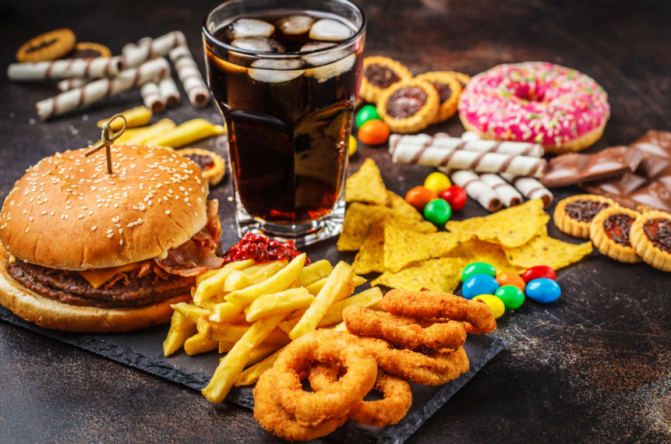D-Ribose and Beyond – Part 3

Friends:
As discussed in my previous article, AGEs (Advanced Glycation End products) are the inevitable byproducts of nonenzymatic glycation and oxidation of sugars onto proteins and lipid oxidants that can potentially create a variety of damaging cellular and metabolic dysfunctions, inflammation, and oxidative stress.
This is called “cross-linking”–the components of the glycation process get hooked into one another before becoming final disruptive
and harmful particles.
Our earlier discussion centered on the use of D-ribose sugar.
To review; it is tricky in that not only do our bodies make it, but there is too much when we are diabetic and even prediabetic that subjects our cells to form dangerous AGE too much and too rapidly.
However, D-ribose as an intelligent and prudently used nutraceutical for most healthy people can potentially offer important, specific, immediate-acting health benefits and relief, especially in addressing certain cardiovascular events.
And though there are possbile roles in performance enhancement and recovery, it is cautioned, that it also has a “dark” side and risks if used too much and too frequently.

Keeping it simple, as AGE particles accumulate on cell receptor sites, they can be a stressor and create pro-inflammatory, disease precursor actions called RAGE–appropriately rhymes, right?
These receptor sites, if not overwhelmed, also have the capacity to help divest the system of AGE particles, so it’s a balance between
the forces of stress reduction vs stressor promotion. When stressors are in a state of overwhelmingly winning, we refer to this stage as RAGE– the term makes sense!
The first steps are the molecules from sugars, specifically saccharides that have various binding or hooking-up tendencies, depending on the type of saccharide, to glycate with amino acids, and form the first transitional compound called Maillard Compounds (MC)–browning effect when heated.
Ironically, to confound the picture, early-formed MC has some antioxidant functions and benefits, like what is found in beer, but it can also change to become irreversible AGE in time.
Ample evidence has found that excessive consumption of mature, well-bonded, advanced glycation end products (AGEs) are harmful compounds.
Cooking foods at high temperatures, AGEs can accumulate in the body as a significant contributor to inflammation that can increase the risk of insulin resistance and type 2 diabetes.
There are different and 3 sequential stages to the final cross-linking with the first two, including Maillard Compounds are much more easily reversible with proper diet, nutraceuticals, and exercise ( probably assists in making cells more insulin sensitive and better controlling blood glucose levels).

Sugary foods and highly processed and prepackaged products also are high in AGEs.
Cooking methods that use high temperatures to brown or char foods, such as grilling, roasting, and broiling, greatly impact the number of AGEs consumed–darn, but they taste so good!
Modifying Cooking Methods:
Modifying cooking methods is the most effective way to reduce the intake of foods high in AGEs.
In a study published in the June 2010 issue of the Journal of the American Dietetic Association, they compared different types of cooking methods and found that dry heat promoted AGE formation by more than 10- to 100-fold above uncooked foods in all food categories.
After cooking, carbohydrate-rich foods such as fruits, vegetables, and whole grains maintained low AGE levels.
Foods cooked with moist heat, shorter cooking times lower temperatures, and acidic ingredients such as vinegar or lemon juice produced the least amount of AGEs.
January 2022 issue of Diabetes Care showed that “overweight women who ate foods cooked at high temperatures had much higher biological markers of insulin resistance than those who ate foods prepared by boiling or steaming.”
Some Examples of Compounds Helpful In the Fight Against AGE Formation:
Spirulina, micro-algae, beer compounds, carnosine, phenolic antioxidants, pigmented berries, teas ( black and green), many herbal teas–most all fruits and vegetables, etc.
As for commercially available products, some online, I do like “Balance of Nature”, “Field of Greens”, and “Brickhouse Nutrition” but there are many other well-formulated botanicals, mushrooms, and microalgae products available at the health food stores.
Revista Română de Medicină de Laboratory Vol. 30, Nr. 2, Aprilie, 2022 201 Exogenous antioxidants and endogenous antioxidants work together to protect the body from free radicals. Antioxidants originating from natural sources such as bacteria, algae, and plants are known as exogenous antioxidants (6).
Blue-green algae or cyanobacteria are a storehouse of bioactive chemicals with well-established antioxidant properties. Phycobiliproteins are the most abundant proteins among the wide range of bioactive compounds produced by cyanobacteria and are promising tools in diagnostics, biomedical research, and therapeutic applications.

Current Diabetes Reports showed that because AGEs are associated with oxidative stress, and as mentioned, they’re of particular concern to patients with diabetes and prediabetes.
The researchers found that subjects who consumed a meal with a high AGE content had an increased circulation of AGEs in the body and that lowering dietary AGE intake could improve hyperinsulinemia by about 40% in type 2 diabetes patients.
Excessive intake of dietary AGEs and AGE provocative sugars, which have the potential to be controlled by our own keener self-management, can be risk-enhancing accelerators in precipitating diabetes–that is really important to understand and appreciate!
This is “an area of major clinical relevance,” the study concluded.
So, in summary, where does this leave us?
AGE is inevitable and normal, but we can be in charge to help manage its production and adverse effects.
My recommendation friends, is to have lots of fresh fruit and vegetables as the major percentage of your diet.
Have minimal to moderate high-temperature cooked flesh proteins, but use liquid when cooked when possible– slow-cooked or lower heat cooked when also possible.
Include nutraceuticals, B vitamins, and antioxidants that can help deter the body from creating irreversible AGE cross-linking.
Regular and ideally daily physical exercise is a very important component in how your underlying blood sugar and insulin sensitivity behave–not to be underestimated!
If taking D-ribose, which I may do infrequently in special circumstances, my preference as it works for me, but perhaps yours is different, is to typically use less than 5 g/dose, and I always accompany it with loads of protective antioxidants!
Enjoy and explore what works for you!
